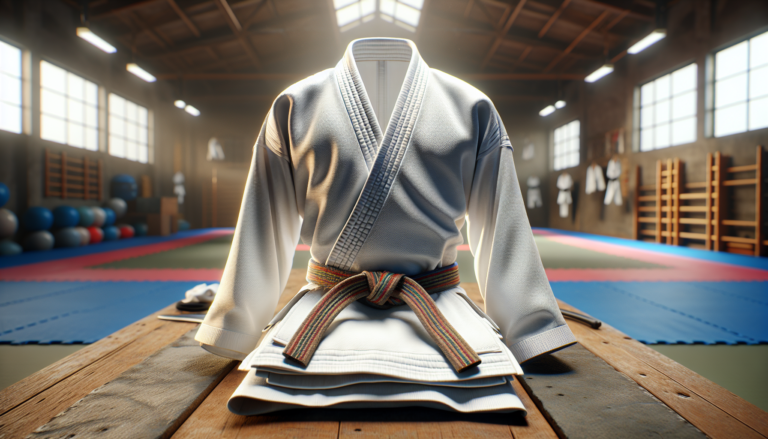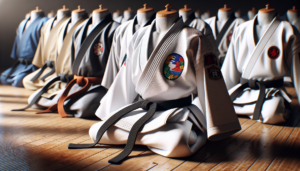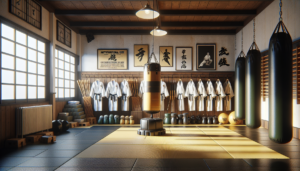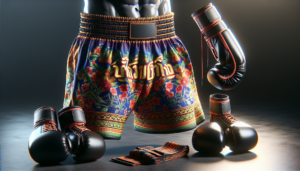Introduction to Karate Uniforms: Gee or Gi?
When starting karate training, one of the first things you’ll need is a proper karate uniform, also known as a karate gee or gi. But what exactly is a karate uniform and why is it important? In this article, we’ll dive into the world of karate uniforms, exploring the terminology, cultural significance, types, materials, sizing, colors, pricing, and accessories.
Understanding the Terminology: Gee vs. Gi
The terms “gee” and “gi” are often used interchangeably to refer to the traditional karate uniform. However, there is some debate about the correct usage of these terms. Some argue that “gi” is a misuse of the Japanese word “dōgi,” which refers to martial arts uniforms in general, not specifically to karate uniforms. The term “gee,” on the other hand, is more commonly used in the context of karate.
Regardless of the terminology debate, the karate uniform is an essential part of karate training and holds deep cultural significance. It represents discipline, respect, and dedication to the martial art.
Cultural Significance of Karate Uniforms
The karate uniform is more than just a piece of clothing; it carries a rich history and cultural meaning. The traditional white color symbolizes purity and the pursuit of perfection in techniques and character. Wearing the uniform signifies a student’s commitment to the martial art and respect for their fellow practitioners and instructors.
In many karate dojos, the act of putting on the uniform is considered a ritual that marks the transition from everyday life to the focused mindset required for training. The uniform also serves as an equalizer, creating a sense of unity and camaraderie among students regardless of their backgrounds or ranks.
Types of Karate Uniforms
Karate uniforms come in various weights and styles to suit different preferences and training needs. The three main types are lightweight, middleweight, and heavyweight uniforms.
Lightweight Karate Uniforms
Lightweight karate gis are ideal for beginners or practitioners who prioritize comfort and ease of movement. These uniforms are typically made from a blend of cotton and polyester, making them breathable and quick-drying. They are perfect for training in warm weather or for those who engage in fast-paced, high-intensity workouts.
While lightweight uniforms offer greater flexibility, they may not be as durable as heavier options and may require more frequent replacements with regular use.
Middleweight Karate Uniforms
Middleweight karate uniforms strike a balance between comfort and durability. They are slightly heavier than lightweight options but still allow for easy movement during training. These uniforms are often preferred by intermediate students who have developed a stronger commitment to their karate practice.
The increased weight of the fabric provides better resistance during grappling and throwing techniques, making middleweight uniforms a popular choice for those focusing on partner drills and sparring.
Heavyweight Karate Uniforms
Heavyweight karate gis are designed for advanced practitioners and those who engage in rigorous training or competition. These uniforms are made from thicker, more durable materials that can withstand the wear and tear of intense practice sessions.
While heavyweight uniforms offer superior durability, they may feel stiffer and less comfortable, especially for beginners. However, many experienced karateka appreciate the added weight and resistance during training, as it helps build strength and endurance.
Materials and Construction of Karate Uniforms
The quality and performance of a karate uniform largely depend on the materials used and the construction techniques employed. Understanding these aspects can help you make an informed decision when selecting a uniform.
Common Materials Used
Karate uniforms are typically made from cotton, polyester, or a blend of both. 100% cotton karate gis are known for their softness, breathability, and ability to absorb sweat. However, they may shrink after washing and take longer to dry.
Poly/cotton blends offer the benefits of both materials, providing comfort, durability, and faster drying times. These blends are popular among practitioners as they combine the best qualities of cotton and polyester.
Reinforced Stitching and Traditional Cuts
A well-constructed karate gi features reinforced stitching at stress points, such as the knees, elbows, and shoulders. This extra reinforcement ensures that the uniform can withstand the rigors of training and last longer.
Traditional cuts are another hallmark of quality karate uniforms. Look for uniforms with a longer jacket length, wider sleeves, and roomier pants to allow for unrestricted movement during techniques and kata.
| Feature | Benefit |
|---|---|
| Reinforced Stitching | Enhances durability at stress points |
| Traditional Cuts | Allows for unrestricted movement |
Sizing and Fit of Karate Uniforms
Getting the right size and fit is crucial for comfort and performance during karate training. Karate uniforms come in various sizes to accommodate different body types and preferences.
Standard Sizing Options
Karate uniform sizes typically range from 000 (for children) to 7 (for larger adults). However, sizing can vary between brands, so it’s essential to refer to the specific size chart provided by the manufacturer.
When choosing a size, consider your height, weight, and preferred fit. Some practitioners prefer a looser fit for greater freedom of movement, while others opt for a more snug fit for a neater appearance.
Elastic Waist vs. Drawstring Pants
Karate uniform pants come with either an elastic waist or a drawstring closure. Elastic waist pants offer a comfortable, secure fit without the need for adjustments. They are often preferred by beginners and children.
Drawstring pants allow for a more customizable fit and are favored by many advanced practitioners. The drawstring enables you to adjust the tightness around your waist, ensuring that the pants stay in place during dynamic movements.
Color Options for Karate Uniforms
While the traditional color for karate uniforms is white, some practitioners prefer alternative colors for personal expression or to distinguish themselves in competitions.
Traditional White Uniforms
White karate uniforms are the most common and traditional choice. The white color represents purity, simplicity, and the pursuit of perfection in karate. In many dojos, white uniforms are mandatory for training and gradings.
The white color also serves a practical purpose, as it makes it easier for instructors to observe the lines and movements of their students during teaching and practice.
Alternative Colors: Black and Camouflage
Some karate organizations and tournaments allow the use of black karate uniforms. Black uniforms are often worn by instructors or advanced students to distinguish their rank and experience. However, the rules regarding black uniforms vary between dojos and competitions.
Camouflage karate uniforms have gained popularity in recent years, particularly among younger practitioners. These uniforms feature military-style patterns and are seen as a way to express individuality or to stand out in a sea of white uniforms. However, camouflage uniforms are not typically allowed in traditional karate settings or competitions.
Pricing and Purchasing Karate Uniforms
Karate uniforms come in a wide range of prices, depending on the brand, materials, weight, and construction quality.
Price Range and Factors Affecting Cost
Entry-level karate uniform prices start around $30 for basic lightweight options. These uniforms are suitable for beginners or those on a tight budget. As you move up in quality and weight, prices can range from $50 to $200 or more for premium heavyweight uniforms.
Factors that affect the cost of a karate gi include the brand reputation, materials used, construction quality, and any additional features or reinforcements.
Where to Buy Karate Uniforms
You can buy karate uniforms from various sources, including:
- Local martial arts supply stores
- Online retailers specializing in karate gear
- Your karate dojo or instructor (some dojos have their own uniform requirements or preferred suppliers)
When purchasing online, make sure to choose a reputable retailer and carefully review the size charts and product descriptions to ensure you’re getting the right fit and quality.
Accessories and Additional Gear
In addition to the karate uniform, there are various accessories and gear that can enhance your training experience and provide additional protection.
Belts and Sparring Gear
Karate belts are an essential accessory that signifies a practitioner’s rank and progress. Belts come in different colors, with each color representing a specific level of achievement. As you advance in your training, you’ll earn new belt colors, typically starting from white and progressing to black.
Sparring gear is crucial for protecting yourself and your partners during kumite (sparring) practice. Essential sparring gear includes:
- Mouthguard
- Hand and foot pads
- Groin protector (for male practitioners)
- Chest protector (for female practitioners)
- Head gear (optional)
Training Weapons and Patches
Some karate styles incorporate the use of training weapons, such as the bo staff, nunchaku, or sai. These weapons are typically made of foam or rubber for safety during training. If your karate style includes weapons training, make sure to purchase the appropriate gear from a reputable supplier.
Karate patches are embroidered emblems that can be sewn onto your uniform to represent your dojo, style, or personal achievements. Patches are a great way to customize your karate gi and show pride in your martial arts journey.
Conclusion: Choosing the Right Karate Uniform
Selecting the right karate gi is a personal decision that depends on your preferences, training needs, and budget. Whether you opt for a lightweight, middleweight, or heavyweight uniform, make sure to prioritize comfort, durability, and freedom of movement.
Remember, your karate uniform is not just a piece of clothing; it is a symbol of your dedication to the martial art and a reflection of your progress and achievements. By understanding the different aspects of karate uniforms and making an informed choice, you’ll be well-equipped to embark on your karate training journey with confidence and pride.






